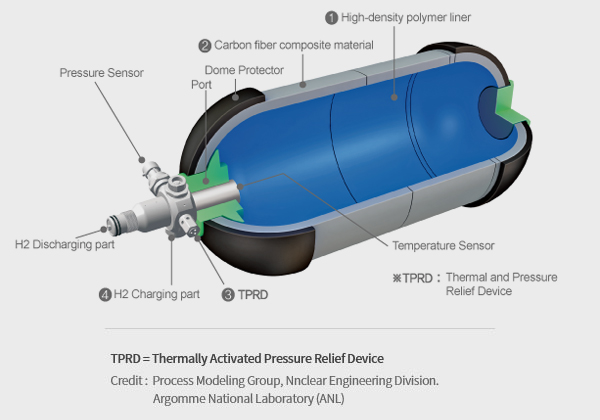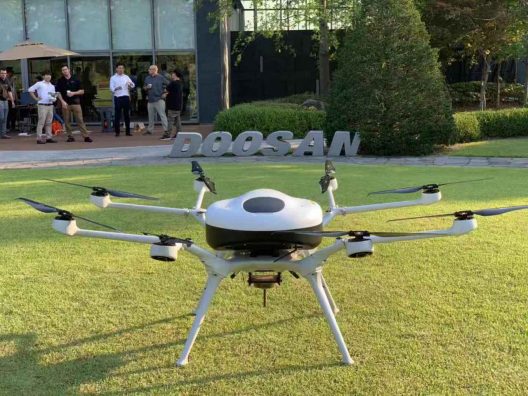A one-hour, 43-minute flight between a hospital on the Caribbean island of St. Croix and a testing facility on the neighboring island of St. Thomas probably set a record for hydrogen-powered multi-rotor, over-water drone flight. The flight delivered live bacteria samples from a hospital on the Caribbean island of St. Croix to a testing facility on the neighboring island of St. Thomas. The demonstration was carried out by Guinn Partners and associated organizations.
Most such medical deliveries are usually over land and within urban areas. Fixed-wing drones flying with Zipline in Rwanda deliver clinical samples and blood 80 kilometers (49.6 miles) each way out and return.
The Doosan Mobility Innovations (DMI) DS-30 drone is a large machine able to carry a 10.8 liter, 4.3 kilogram (9.46 pound) compressed hydrogen container – good enough for two hours endurance. There was 30 minutes’ supply left in the tank when the drone landed on St. Croix. The machine can carry up to a five-kilogram (11-pound) payload.
Members of Guinn Partners worked with Doosan Mobility Innovations, in collaboration with Skyfire Consulting, and the US Department of Health, to execute the delivery.
The DS-30’s capabilities can be a literal life-saver for patients. NewAtlas reports, “According to Guinn Partners, it can ordinarily take up to a week before patients’ biological fluid samples are transported between the two islands by manned aircraft – in the case of illnesses such as Dengue fever, the infection can progress to dangerous levels within that amount of time. Because using a drone is much cheaper and simpler, though, samples could conceivably be sent to St. Croix immediately.”
Although the recent flight relied on control from a boat trailing the drone, future outings will be autonomous.
A Strong Tank
The H2 tank on the DS-30 is capable of withstanding shots from a large military rifle round, based on illustrations provided by Doosan. That, and the simple approach to transporting tanks and connecting them to the drones indicates a well-though-out approach to logistics. The one thing that might prevent broader adoption of the system is the need for DMI to supply the already-filled tanks, with “empties” returned like deposit beverage containers.
Future Outings?
With increasingly large multi-rotor machines taking an increasingly large chunk of the drone market, Doosan seems to be positioning itself in fixed-wing arena, perhaps in anticipation of longer-range missions.


